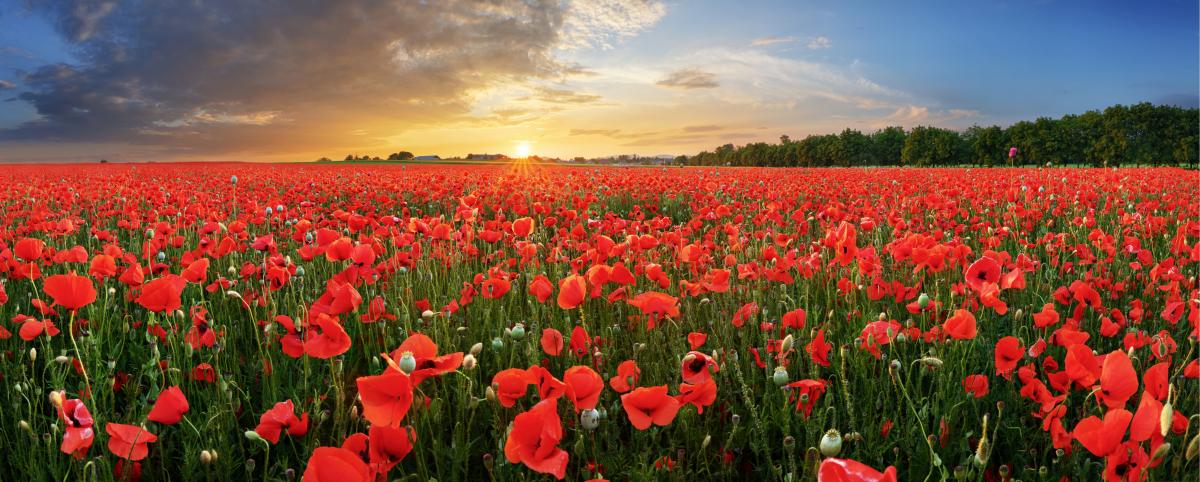This wonderful Cornish workshop and museum is dedicated to the legacy of studio pottery trailblazer Bernard Leach
The art, literature and music of World War I
The art, literature and music of World War I
5 Nov 2018

The trauma of World War I provided the impetus for a wealth of art, literature and music. From Wilfred Owen’s harrowing poem Dulce et Decorum Est to the works of artist Christopher Richard Wynne Nevinson, the pieces produced during this period have left an indelible mark on our cultural landscape. To commemorate the Armistice Centenary, we ask three Arts Society Lecturers to share their favourite pieces of art, literature and music that were shaped by, or created in response to, the terrors of this conflict.
World War I music
Denis Moriarty
I came to the emotional tug of music with poetry when I sang in the chorus of Benjamin Britten's War Requiem at the Royal Albert Hall, in a performance conducted by the composer. At once graphic, tender and deeply felt, Britten’s requiem intertwines Wilfred Owen’s war poems with the Latin Mass for the Dead.
However, the pieces that move me most are two late chamber works by the composer Edward Elgar; in particular, his Piano Quintet in A minor and his String Quartet in E minor. These pieces were composed in 1918 and reflect the anxieties of his personal circumstances and his distress at the agonies of the war. Small scale, they are both profoundly felt, especially in the slow movements. The Adagio of the Quintet says it all; even amid the turmoil of its restless passages, the sorrow and the sadness could not be more poignantly expressed.
A year later, Elgar composed his famous Cello Concerto in E Minor. Sorrowful and eloquent, the concerto’s second movement evokes, for me, the silent testimony of the cemeteries of Flanders.
Denis Moriarty is a lecturer and leads cultural tours around Europe and beyond. As an Arts Society Lecturer, his talks include World War I: Poetry, Art, Music and Wilfred Owen; Edward Elgar: The Music and Architecture of the Three Choirs and Their Cathedrals; and Julia Margaret Cameron 1815–1879, Pioneer Photographer. Find out more at denismoriarty.com
The poetry of World War I
John Iddon
The war poems that resonate with me were written long after World War I. Written in 1964, Philip Larkin’s poem MCMXIV (1914 in Roman numerals) describes lines of men queuing enthusiastically to enlist: ‘as if they were stretched outside the Oval or Villa Park’. Opening with images of pre-war content and stability, Larkin’s poem ends with an understated – yet hauntingly evocative – description of the changes wrought by conflict.
The other Great War poem I love is The Last Post written by Poet Laureate Carol Ann Duffy in 2009. Commissioned by the BBC to mark the funerals of Harry Patch and Henry Allingham, two of the last survivors of the trenches, the poem describes what would happen if British soldiers could come back to life:
‘and all those thousands dead
are shaking dried mud from their hair
and queuing up for home...’
Filled with visions of the soldiers’ imagined futures, the poem also provides a nod to the war poet Wilfred Owen:
‘You see the poet tuck away his pocket book and smile.
If poetry could truly write it backwards,
then it would.’
Owen’s smile at the thought of turning back time is particularly rueful – he was killed just days before the Armistice on 11 November 1918.
John Iddon is a lecturer, art historian, art dealer and guide at Tate Britain and Tate Modern. As an Arts Society Lecturer, his talks include: World War I through the Lives of Artists and Poets; Horace Walpole and Strawberry Hill; and Picasso and his Muses. Find out more at johniddonfineart.com
Art of World War I
Tricha Passes
One of my favourite images that captures aspects of peace and memory in the aftermath of World War I is a painting called The Cornfield. Created by the artist John Nash in 1918, it encourages us to imagine a sense of returning home to England after having survived the war. Particularly for those who have witnessed such suffering and devastation, Nash poignantly captures the joy of being able to look over a harvested field.
While acting as a memento mori (reminder of death), the painting operates in stark contrast to his other work of 1918. Titled Over the Top, this evocative picture depicts soldiers from Nash’s own regiment emerging from the trenches.
Tricha Passes is a lecturer, art historian and author. As an Arts Society Lecturer, her talks include British Artists and the First World War; Postmodernism: Art, Architecture and Design; and Women in the City: Representations of women in New York During the 1920s and 1930s from Alice Faye to Isabel Bishop.
Images: Shutterstock
About the Author
The Arts Society
JOIN OUR MAILING LIST
Become an instant expert!
Find out more about the arts by becoming a Supporter of The Arts Society.
For just £20 a year you will receive invitations to exclusive member events and courses, special offers and concessions, our regular newsletter and our beautiful arts magazine, full of news, views, events and artist profiles.
FIND YOUR NEAREST SOCIETY
MORE FEATURES
Ever wanted to write a crime novel? As Britain’s annual crime writing festival opens, we uncover some top leads
It’s just 10 days until the Summer Olympic Games open in Paris. To mark the moment, Simon Inglis reveals how art and design play a key part in this, the world’s most spectacular multi-sport competition



